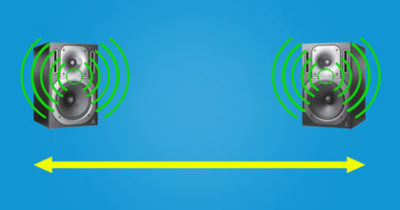Outside Scoop: 6 Tips for Creating Wider Mixes, Choosing The Right MIDI Controller, and More
The Outside Scoop rounds up the latest and greatest music production articles and videos from around the web. This week, we take a look at how to get a perfect -6 dB mixdown with gain staging, 6 tips for creating wider mixes, when to change vacuum tubes, 5 ways to improve how you use reverb on vocals, and more.
How to Get a Perfect -6 dB Mixdown With Gain Staging
Many mastering engineers ask for mixdowns to peak at no more than -6 dB. This provides them with a little bit of headroom to work with as they begin to apply processing. While gain staging is slightly more important in the analog world than the digital world, due to noise, Vespers of Warp Academy expertly shows you how to easily achieve a mix that peaks at -6 dB.
6 Tips for Creating Wider Mixes
Black Ghost Audio explains how you can achieve wider mixes using panning, stereo imaging plugins, double tracking, synthetic doubles, and more. Learn how Deadmau5 used unconventional stereo imaging techniques in his latest song “Drama Free (feat. Lights)” to achieve an incredibly wide-spread mix.
When To Change Vacuum Tubes
Paul from PS Audio discusses when you should change the vacuum tubes in your audio equipment. He touches on the fact that you can use certain measurement equipment to test the quality of tubes, but then reveals that the true test is using your ears. He generally recommends testing out new tubes every year to see if they make a difference. For a more in-depth look at this topic, watch the full video.
5 Ways to Improve How You Use Reverb on Vocals
Matthew Weiss of the Pro Audio Files demonstrates 5 different ways in which you can improve the way you’re applying reverb to vocals. Weiss explains that “Mixing is like sailing a ship on the ocean. Emotion is the beacon that tells us where to steer. So before even thinking about what types of reverb to pick and how to set it, we need to be thinking about what feelings we are trying to augment.” Read the full article to learn more about how emotional intent, timing, reverb types, contrast, and experimentation all play a part in carefully sculpting your vocal reverbs.
How to Separate Inspiration from Impersonation in Your Songwriting
Developing the ability to mimic the style of other artists is impressive, but where do you draw the line between inspiration and impersonation? Patrick McGuire of LANDR explains how to go about creating original music using the work of others as inspiration. His main points consist of defining music that resonates with you, examining your own songwriting process, critiquing your own work, and experimenting with new ideas.
Fletcher Munson Curves: How Equal Loudness Contours Affect How You Mix
Michael Hahn of LANDR describes how “Fletcher-Munson curves are equal-loudness contours. Equal-loudness contours describe the perceived loudness of a sound in relation to its frequency for human listeners.” The reason why a sine wave at -60 dB at 10 kHz sounds louder than a -60 dB sine wave at 50 Hz is because of the structure of your ear. Read the full article to learn about how an organ in your ear called the cochlea is responsible for these Fletcher Munson Curves, and how these curves have played a role in development of Loudness Units relative to Full Scale (LUFS).
The Complete Guide to Choosing a MIDI Controller
Philip Mantione of the Pro Audio Files says that “The devices and software that inhabit your studio or make up your rig, the type of audio production or music creation you’re engaged in, your needs for portability, your skills as an instrumentalist, etc. are all important things to consider when choosing a controller.” This article describes some essential things to look for in a new MIDI controller, and offers up some MIDI controller recommendations as well.
Native Instruments’ Massive X Features Announced
I don’t usually cover gear/sofware announcements in the Outside Scoop, but there’s been an incredible amount of hype behind the newest version of one of Native Instruments’ very popular soft synths, Massive. It will feature around 125 wavetables at launch, and the wavetable oscillators will have 10 different modes, each with their own character; these oscillators can then be modulated even further with two phase modulation oscillators. Read the full article via Native Instruments blog for the full set of updates coming to Massive’s newest rework, Massive X.
How to Become a More Effective Music Producer By Setting Goals
EDMProd wrote an informative article that describes why setting music production goals is important, why most producers fail to achieve their goals, and how you can use three different techniques to stay on track and working towards your own goals. The techniques include using a 90-day controllable output goal, converting your goal into a daily and weekly metric, as well as keeping your work environment organized. This article also allows you to download a free “Producer Action Plan” and “Goal & Metric Tracking Sheet.”
Charles Hoffman is a Mixing and Mastering Engineer at Black Ghost Audio. After graduating from the University of Manitoba with an English degree, Charles completed his education at Icon Collective in Los Angeles, CA.
Please note: When you buy products through links on this page, we may earn an affiliate commission.








[…] http://sonicscoop.com/2019/03/16/outside-scoop-6-tips-for-creating-wider-mixes-choosing-the-right-m… Outside Scoop: 6 Tips for Creating Wider Mixes, Choosing The Right MIDI Controller, and More […]